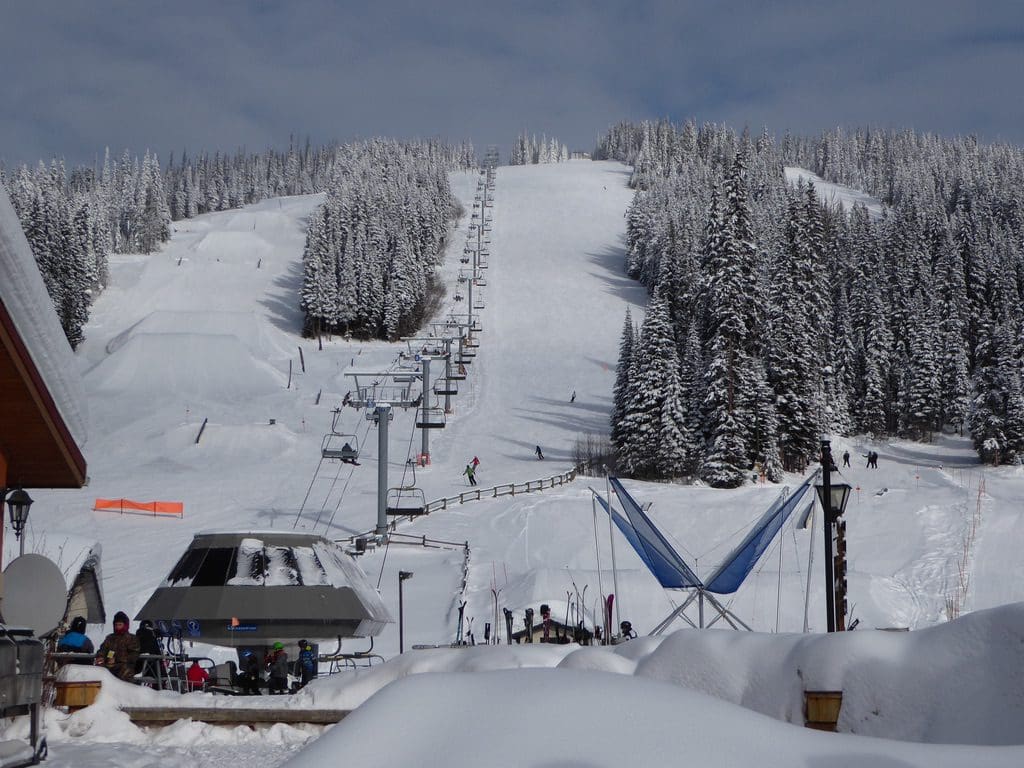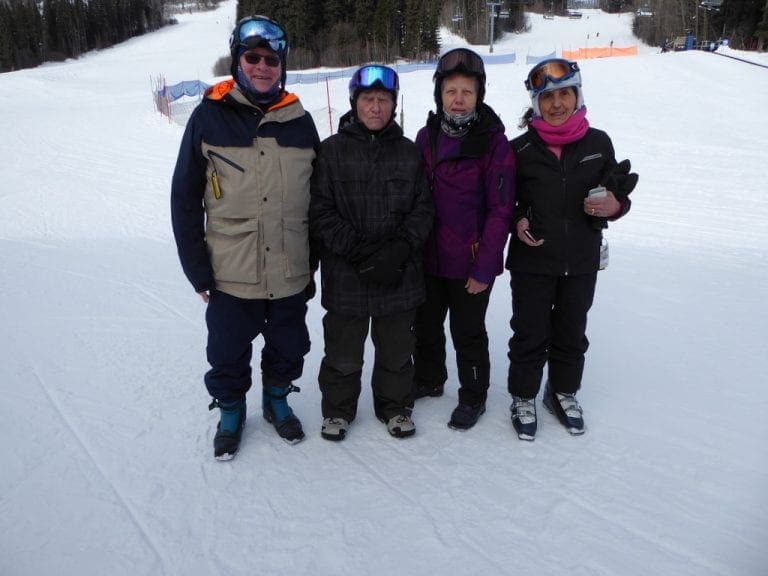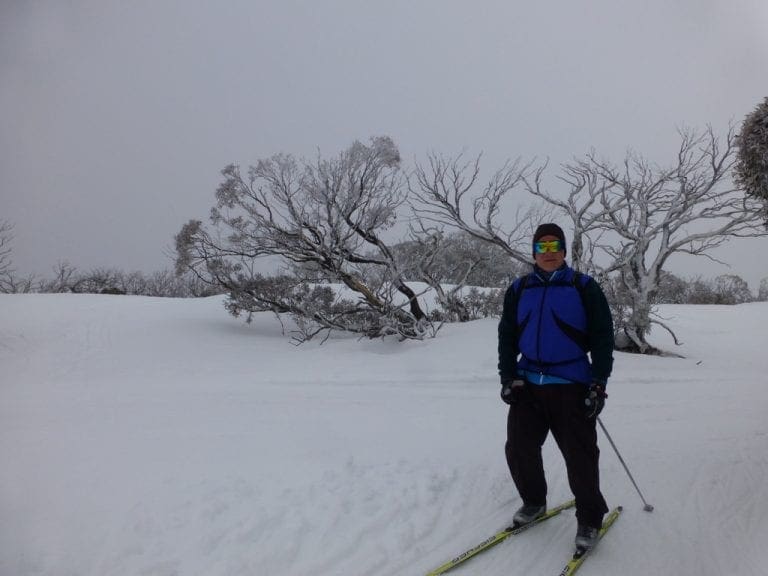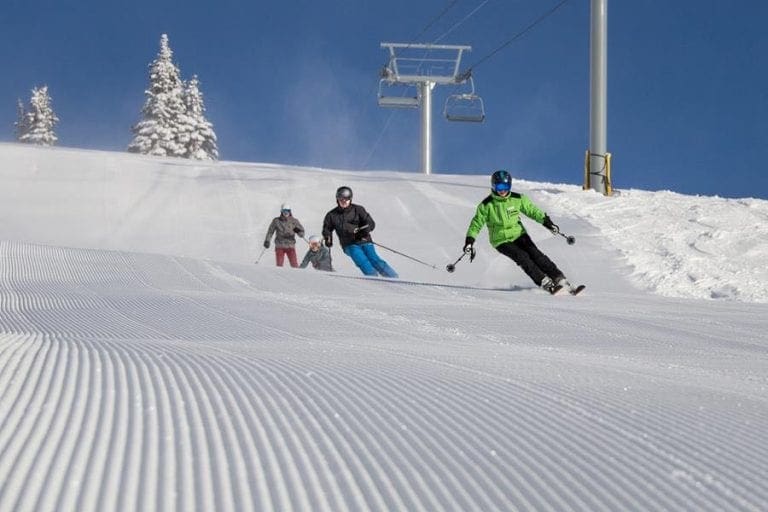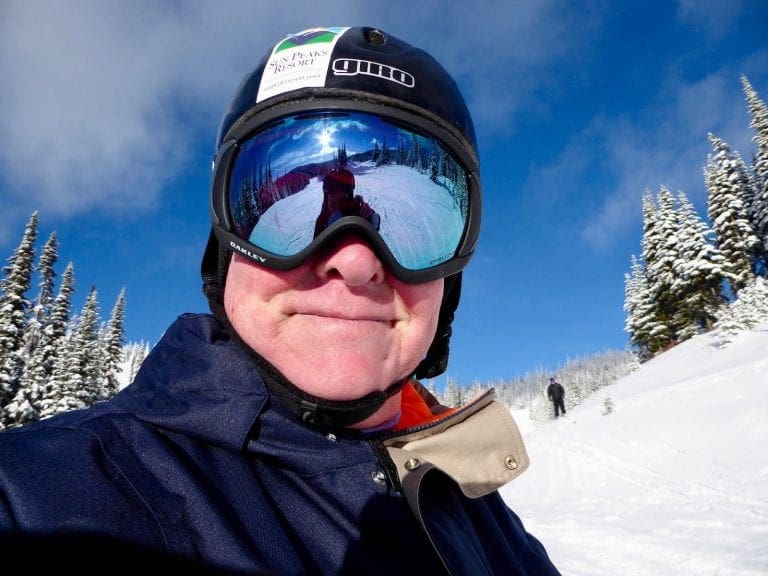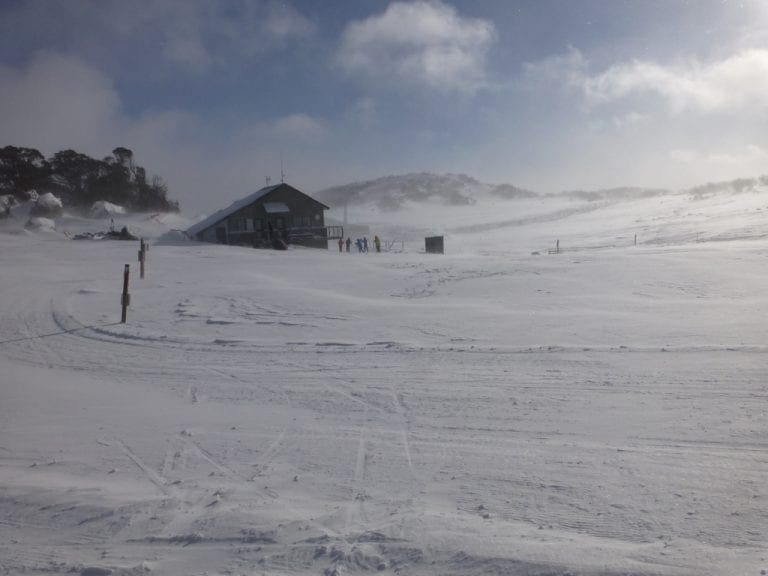Sun Peaks skiing 2017 – week 3
Wednesday 1 Feb 2017. Day 15. An unscheduled day off. The temp in the village was -18ºC with wind and we chickened out. I think I like skiing better when there is just a single digit after that minus sign. Probably better for the day off. We were getting a little overdone.
Thursday 2 Feb 2017. Day 16. Cold. -19ºC in the village but warmer up the hill. We classic skied for 1:30 hours and did not get far – too cold for the skis to glide well. Much hard work for not much progress. Skiing from one patch of sun to the next. Back for an outside hot tub -8ºC outside undercover.
Friday 3 Feb 2017. Day 17. Another day off. Still cold and yesterday really got to us. It began snowing at 10:58am just 2 minutes before the forecast – pretty good forecasting. They have been rattling on about this snow for about a week. It is forecast to be a nationwide event and cause significant road and air transport disruption. For us, we are expecting a much needed 20cm top up. Unfortunately, the temperature is not expected to increase – but the fresh snow should be good.
Alerts being issued for snow accumulation. In the east of Canada, there are still chunks of the country without power (or heating) since the last disastrous ice storm when what fell as rain froze on all external surfaces. The weight of the accumulating ice ripped branches off trees and downed power lines. Those outside surfaces included roads – so that getting around (to work, to shop or to fix downed power lines) is extremely difficult and dangerous. With luck, here, we will just have a nice accumulation of dry powdery snow. A couple of videos of the land of ice & snow.
https://www.youtube.com/watch?v=dcNrh8FL3vE
https://www.youtube.com/watch?v=i59v0p-gAtk
Saturday 4 Feb 2017. Day 18. About 10cm new snow overnight. About 7cm sitting on top of the groomed trails. Classic skied up Village Trail, Cotton Tail, Black Bear, Lake McGillivray Track, Moose, Great Grey, Vista and out. We were the first skiers in either direction on Black Bear and Moose. Main tracks very heavily used. Skaters were having a ball skating the light, dry, soft, powder snow on top of good grooming. (In Oz, we would not have seen a skater out because of the new snow which would have been wet and difficult to ski.)
We were out for 3hours (2 1/2 hours in zone 3 – 80%-90% of max heart rate) and 2,000kcals; and despite the high energy output, our fingers got cold. Core and legs were ok, but thumbs and middle fingers were not happy. -10ºC.
Sunday 5 Feb 2017. Day 19. 28cm of new snow in the last 24 hours. -15ºC throughout the resort. We wrapped up well and skied from the top of Morrisey chair down Holy Cow, Great Grey, Vista and Village Trial to the covered bridge and walked back through the village. That took us 2:30hours. It is worth noting that Sun Peaks holds an annual race that covers that same track (except the Village Trail), the skaters take just 15 mins to cover what takes us 2hours! Youth!
On return to the Hotel, we met old friends Bruce and Juliet. Snow in Vancouver has caused significant transport disruptions – planes delayed and cancelled, luggage lost and delayed (especially skis – there is a believable rumour of a huge pile of skis at Vancouver airport). Snow is rare in Vancouver and the city has almost no snow ploughs and snow removal equipment – hence the transport problems. 13:30hours and 8,100kcals for the week. Left is Lynx Backcountry Trail’s exit onto Great Grey. What a hoot!
Monday 6 Feb 2017. Day 20. -20ºC outside today. Staying inside is the better part of valour. Day off.
Tuesday 7 Feb 2017. Day 21. -25ºC outside today. (feels like -28ºC). If yesterday was too cold, today certainly is too, too cold. We had a walk around the shops (bought a cap and a pair of socks). Helen walked through the upper village in the afternoon. I read the Economist supplement on Democracy and its continued decline in most countries (except Scandinavian countries and New Zealand), especially the USA which slipped from a ‘full democracy’ rating to a ‘flawed democracy’. There is 75 page article which included a table of five variables for each of the 167 countries examined – as well as detail on how the variables are built. ‘Actual data!’ I thought, ‘I feel a Factor Analysis coming on’.
